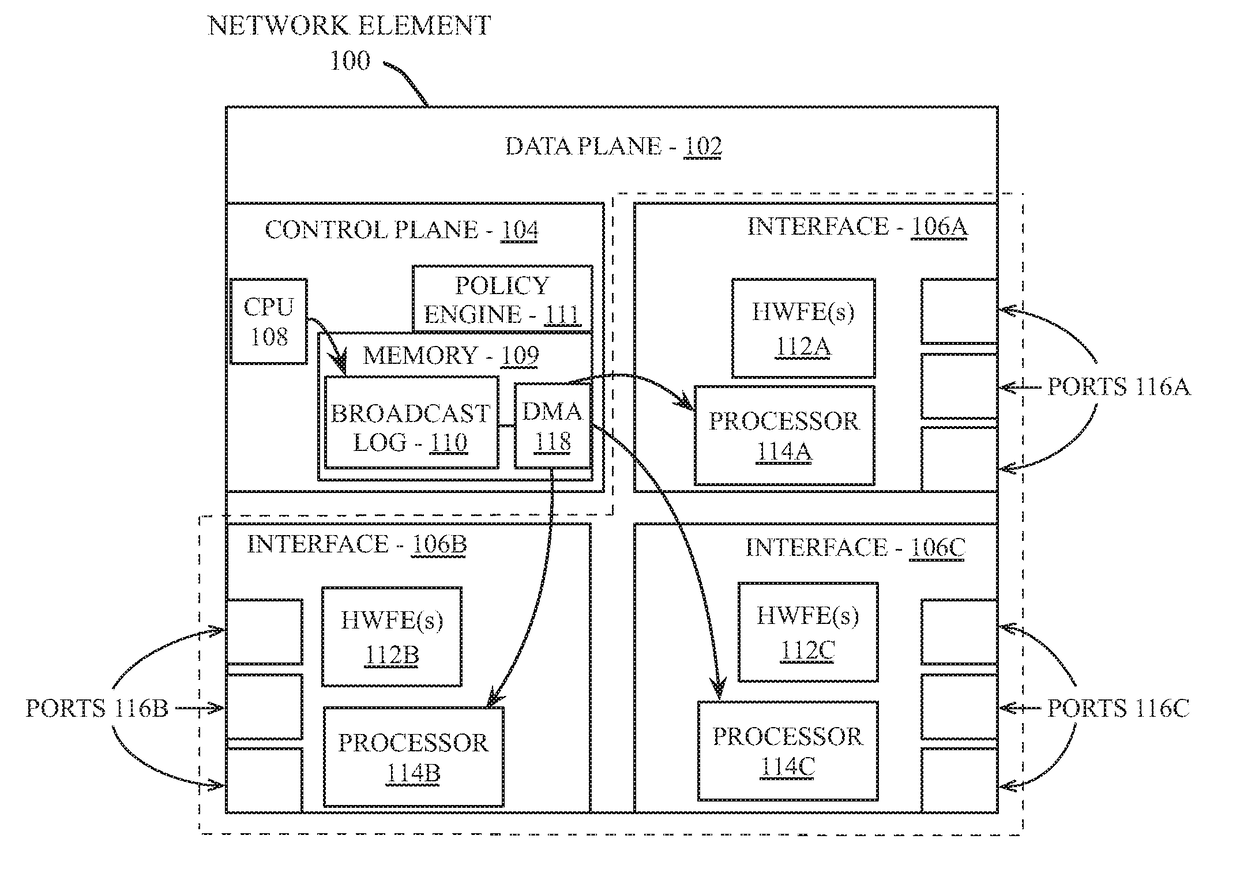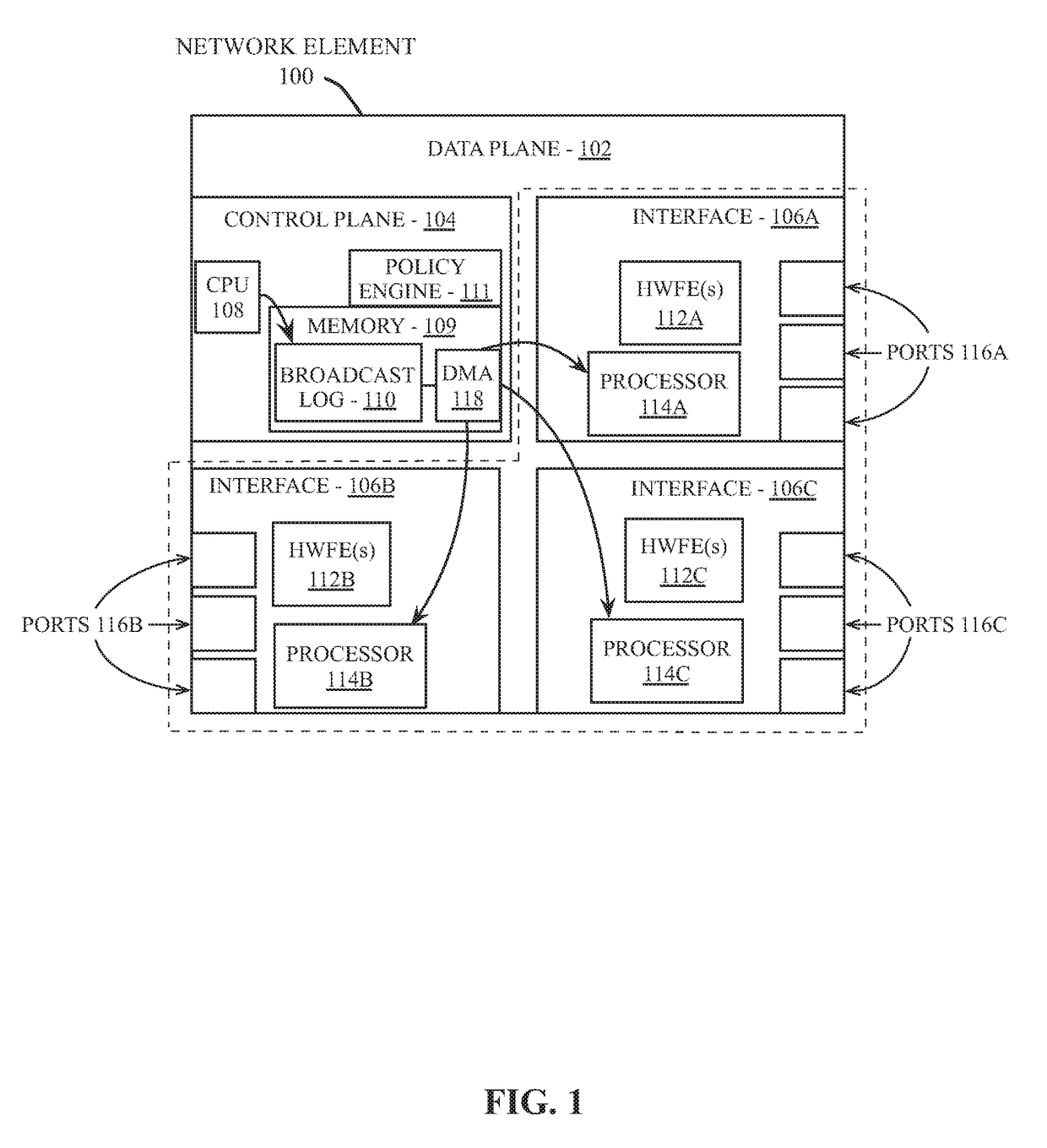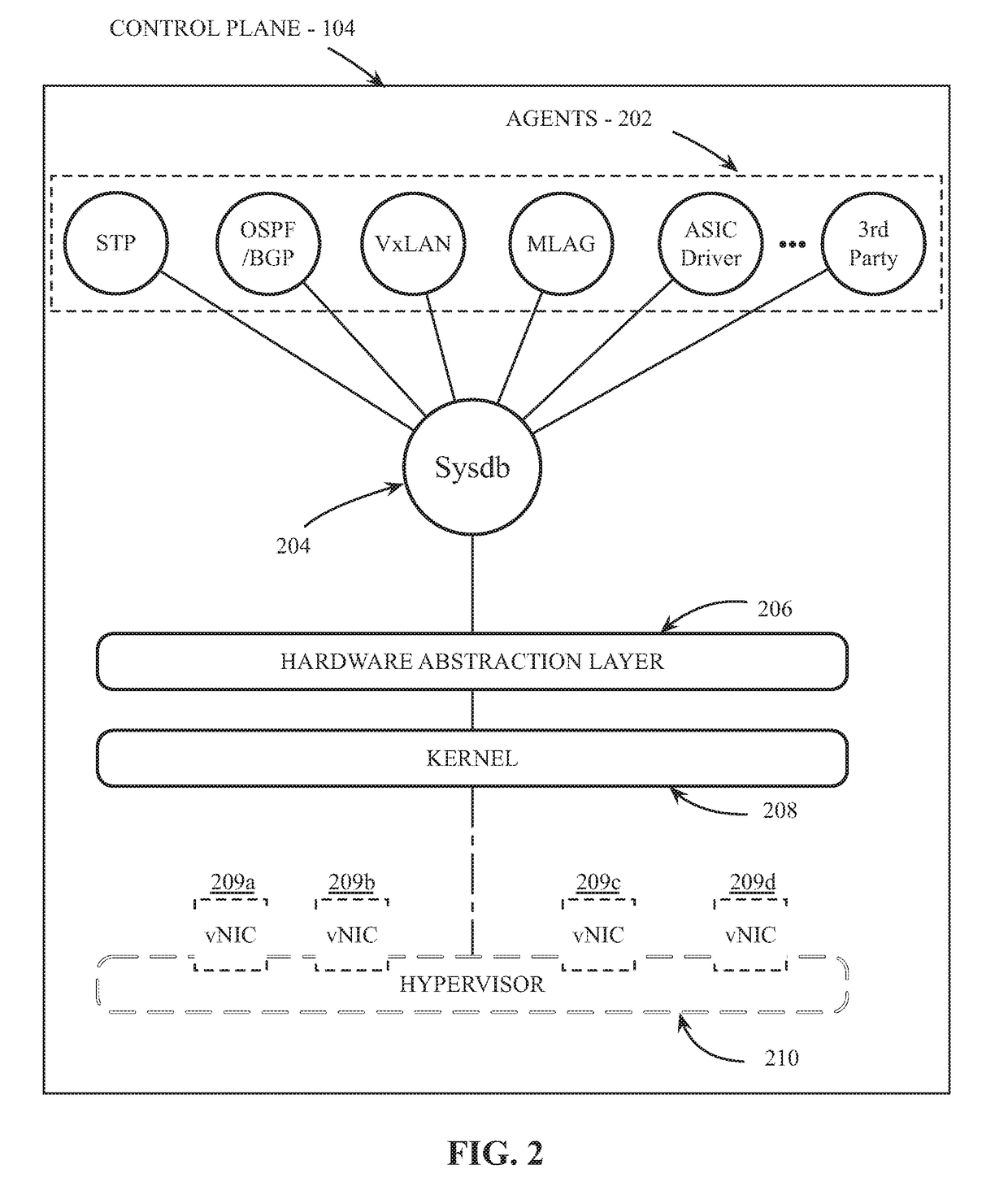Hierarchical time stamping
a time stamping and hierarchy technology, applied in the field of data networking, can solve the problems of increasing the cost of implementation, increasing the latency of network data propagation through the network nodes,
- Summary
- Abstract
- Description
- Claims
- Application Information
AI Technical Summary
Benefits of technology
Problems solved by technology
Method used
Image
Examples
Embodiment Construction
[0023]Embodiment described herein can be implemented in a network including enterprise level network elements (e.g., switch, router, etc.) having hardware assisted time stamping for production network data. One embodiment provides a hierarchical time stamping system in which time stamps are applied to network data as the data arrives at each node on the network. The time stamps are applied hierarchically, where an additional time stamp is appended to each unit of network data at each node within the network. The time stamps can be used to determine node-to-node latency within the network for production traffic, as well as determine the path of each unit of network data (e.g., packet, datagram, frame, etc.) as the data traverses the network.
[0024]To provide a thorough explanation of the various embodiments, numerous specific details are set forth herein. However, one having ordinary skill in the art will understand that embodiments may be practiced without these specific details. In ...
PUM
 Login to View More
Login to View More Abstract
Description
Claims
Application Information
 Login to View More
Login to View More - R&D
- Intellectual Property
- Life Sciences
- Materials
- Tech Scout
- Unparalleled Data Quality
- Higher Quality Content
- 60% Fewer Hallucinations
Browse by: Latest US Patents, China's latest patents, Technical Efficacy Thesaurus, Application Domain, Technology Topic, Popular Technical Reports.
© 2025 PatSnap. All rights reserved.Legal|Privacy policy|Modern Slavery Act Transparency Statement|Sitemap|About US| Contact US: help@patsnap.com



